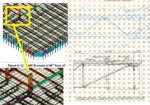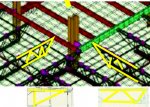gamolon
DP Veteran
- Joined
- Feb 3, 2015
- Messages
- 3,549
- Reaction score
- 612
- Gender
- Undisclosed
- Political Leaning
- Undisclosed
Again.Keepin that one for posterity - it's gamolon classic.
What function do the bolts I have circled below serve ? Because by your logic - they did nothing, because all they did was bolt the truss to itself. Inane.
View attachment 67229747
They are showing the truss being FIELD BOLTED to the plate/IBeam that is drawn with DASHED LINES. The DASHED LINES represent hidden or separate components from the actual item being drawn. Why do you think they note FIELD BOLTS!!!!????
They bolted connection is made IN THE FIELD during construction!!!




